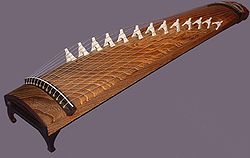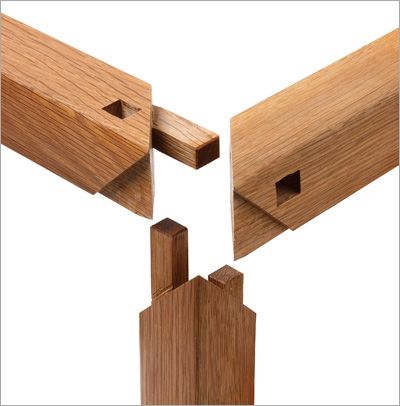Japanese Joinery
JAPANESE JOINERY - TEAM PUMPKIN (PAUL, LIZO, PHIL)
Traditional Japanese joinery is called Sashimono. Sashimono is an assembly technique for wooden items without using hardware. The term "Sashimono" derives from the traditional practice of using a woodwork ruler called a "monosashi" to carefully measure timber materials. This type of joinery can be very simple as well as extremely complex and is known for its intricate craftsmanship and precision, resulting in strong and durable wooden structures and furniture (with no nails or screws, baby!). The joinery designs are renowned for being durable, long-lasting and just plain beautiful. Some of these designs were used to construct and take down homes at a fast pace, as no fasteners were required and iron was poor quality, resulting in a need for timber for home building and cabinetry.
HISTORY:
Sashimono refers to a wood joinery technique we can find traces of around the 6th century but that evolved through the 17th to 19th century. These styles of joinery were originally used in the creation of furniture for wealthy families and Samourai, but with the rise of Zen Buddhism, a greater emphasis on simplicity and harmony with nature was incorporated into the designs. Some of the examples (in soothing gif form) can be seen here.
TOOLS:
It's all hand tools in this world, at least traditionally. We're talking hand chisels, planers, saws and an extreme level of patience. If you really want to dive in, some general tools to start with include:
- -ruler.
- -square.
- -marking gauge.
- -chisels (you'll want a few different sizes)
- -hammer.
- -ryoba saw
- -dozuki (maybe both rip and crosscut)
- -smoothing plane.
MATERIALS:
Japanese woodworkers tend to use Paulownia wood, a durable hardwood endemic to Southeast Asia that is also quite resistant to rot. The Japanese are particularly enamoured of it, cultivating it widely and using it for boxes, furniture, wooden shoes and musical instruments such as the koto and pippa.
KOTO

PIPPA

KANE TSUGI JOINT:

One of the more renowned joints is the Kane Tsugi Joint, which Fine Woodworking really has the hots for . . .
You can watch an assembly video here.
A Kane Tsugi joint is a miter and pinned bridle joint fused together to create AN ULTIMATE JOINT TO RULE THEM ALL. Even without glue, this joint is almost impossible to break. The bridle joint aspect provides good resistance to compression and racking, while the miter is strengthened by the inserted pin. Unless you want to smash this with a hammer, this is pretty dang strong.
THE KAWAI TSUGITE
The Kawai Tsugite joint is one of the most bizarre and fun joints in Japanese joinery. It allows you to connect wood from three directions (horizontally, at right angles or vertically). This joint is extremely complex to make and unfortunately not a very useful woodworking joint as wood is strongest along the grain, and this joint doesn't take advantage of that. The Kawai Tsugite doesn't resist much stressors like tension or vertical stress but is really, really attractive and allows woodworkers to post cool photos online.
MODERN USAGE
Japanese joinery still has a devoted international following, though the emphasis on hand tools does not make the joinery accessible to all levels. It is well worth exploring a style of building that requires patience, respect for the natural world, and helps you learn more deeply about wood behavior.
Le présent courriel est destiné uniquement au(x) destinataire(s) susmentionné(s). Son contenu est confidentiel. Si vous avez reçu cette communication par erreur, veuillez nous en aviser immédiatement et effacer l'original, sans en tirer de copie, en dévoiler le contenu ni prendre quelque mesure fondée sur celui-ci. The present message is intended only for the named recipient(s) above. Its contents are confidential. If you have received this message in error, please notify us immediately and delete the original without making a copy, disclosing its contents or taking any action based thereon.


Comments
Post a Comment